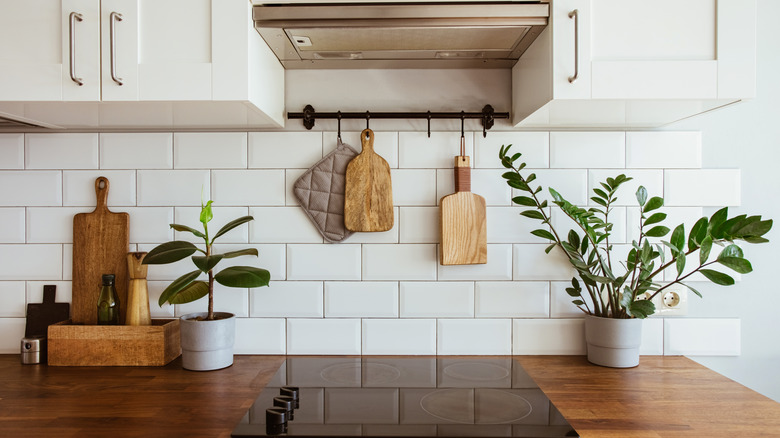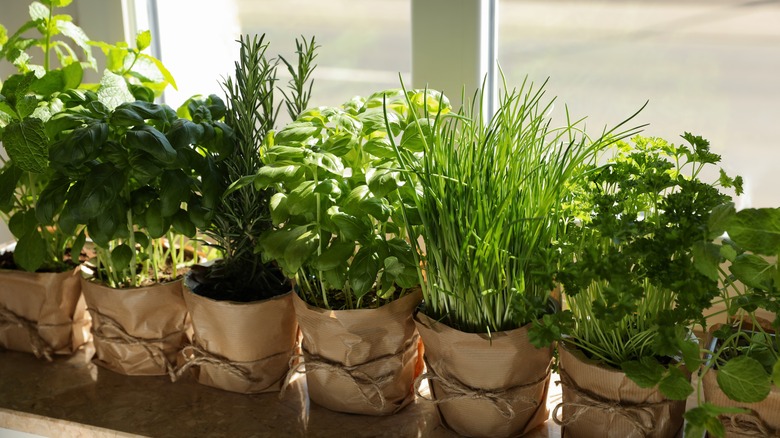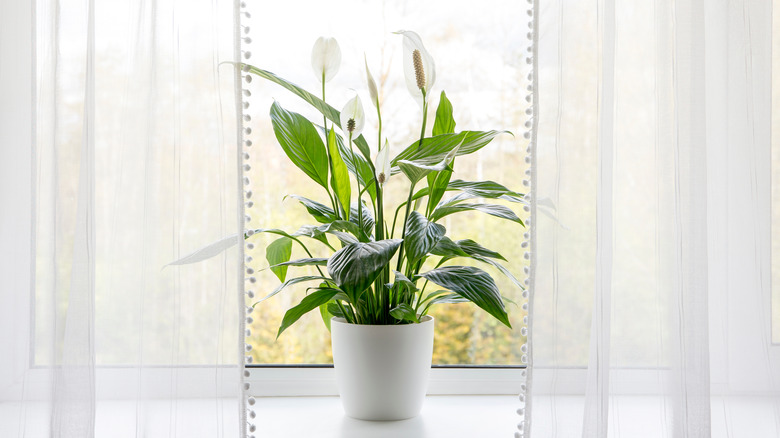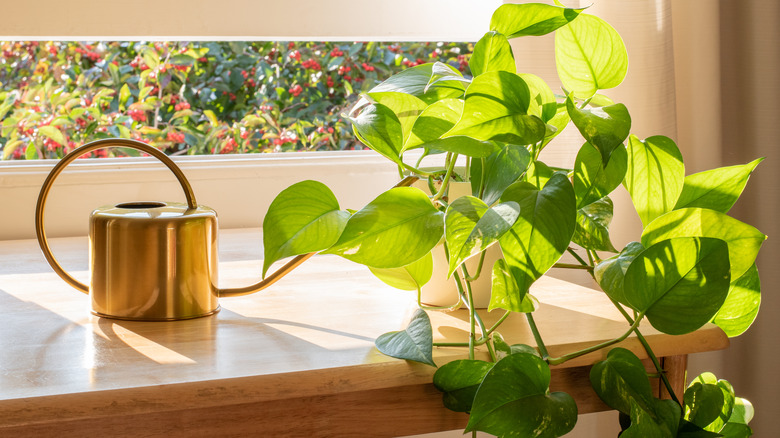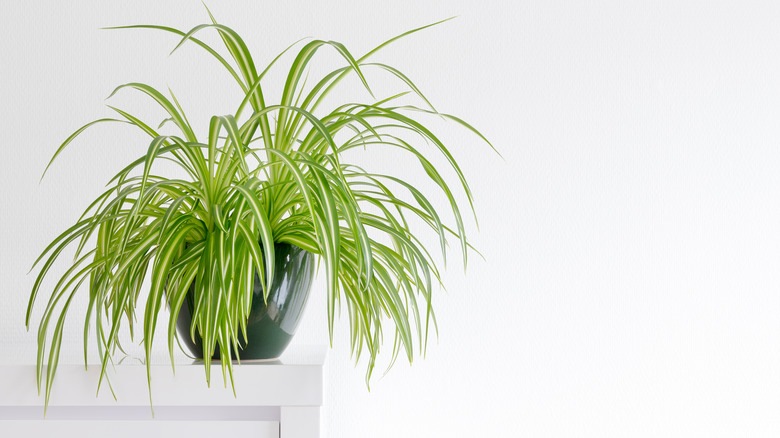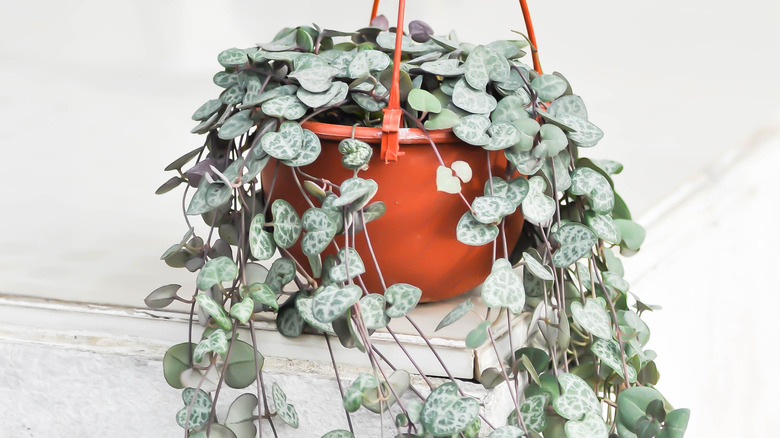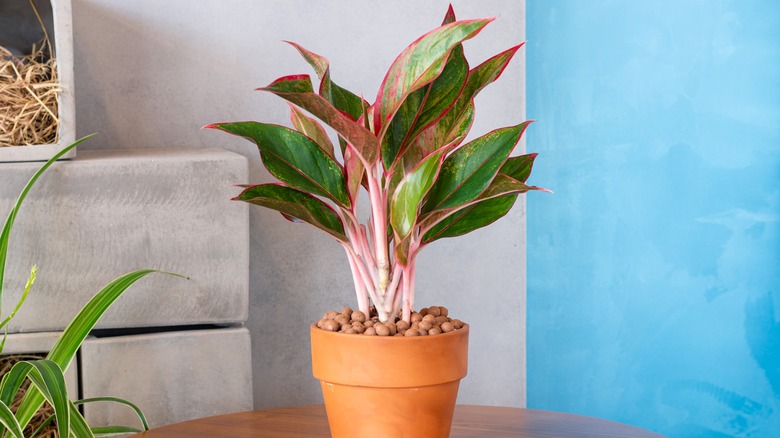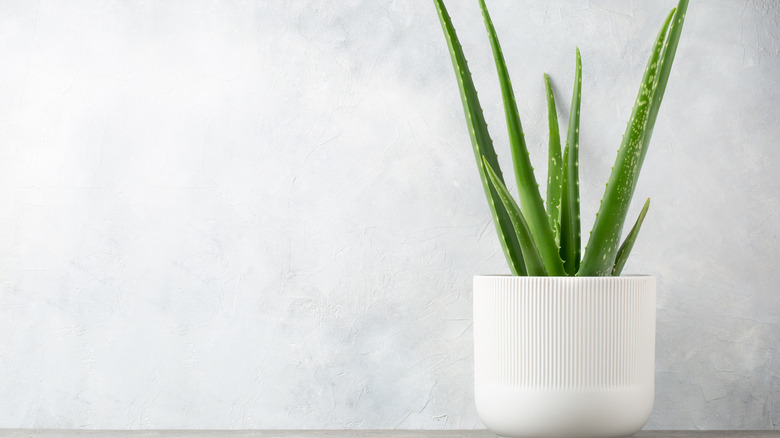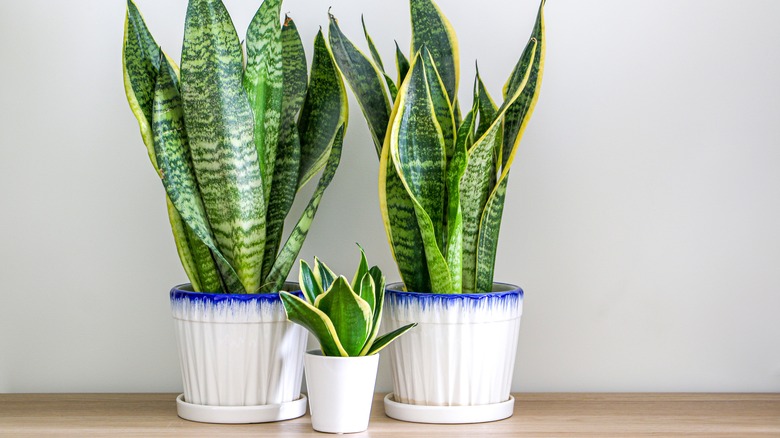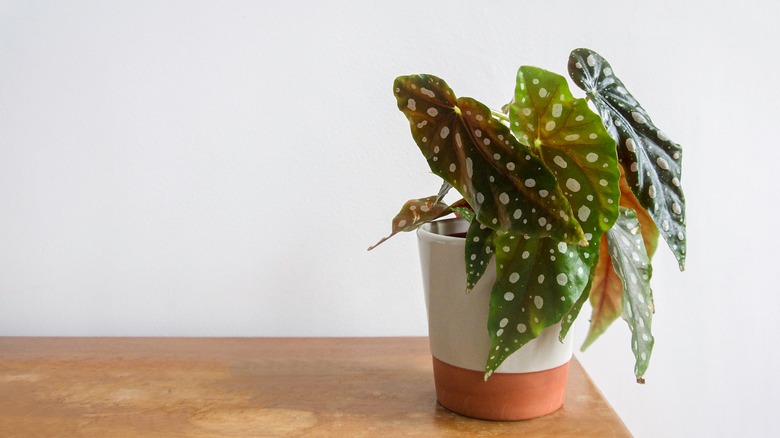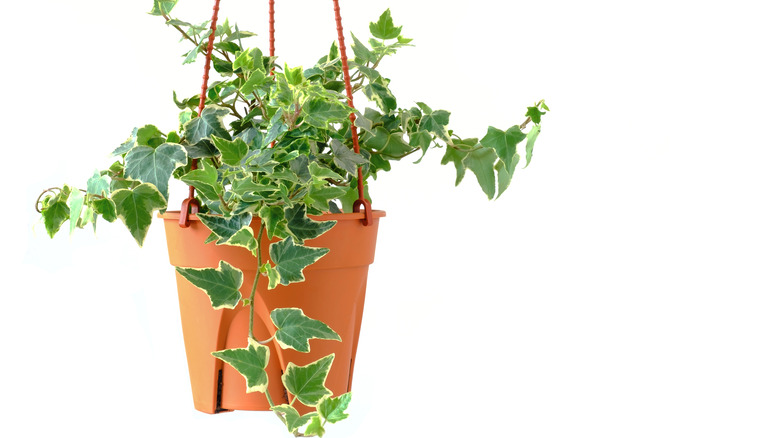The Best Plants To Keep In Your Kitchen
The winter months require a reimagining of your home environment — window light hits different angles for fewer hours, and your home's temperature or humidity might change significantly with. You might need to purchase grow lights, or move your sun-starved indoor plants around for their best chance of survival.
The kitchen, aka the heart of the home, could definitely use some sprucing up this season to make sure all those at-home lunches or snowed in weekends will still be a breath of fresh air.
Super floral scented plants may not be an ideal fit for the room where aroma is currency. Of course, if you're growing plants that will become part of your future delicious dishes, it's a no-brainer to have them homed right in the center of the action. Good Housekeeping sees major possibilities for your herbs of choice, and there are plenty more options for aesthetic and practical plants to make your kitchen the room of your dreams.
You could have essential herbs at your fingertips
The first step is paying attention to the direction of the sun and your home's best sunlight hours. Typically, south-facing windows receive the most sun in the day, followed by west-facing windows, who flourish in the afternoon light. The possibilities are endless for growing herbs to admire and harvest in your very own kitchen. Homes and Gardens suggests working with the lighting available in your kitchen. If you have major sunny areas, even through the winter, you may have major success with herbs like basil, rosemary, thyme and sage. For plants that need less sun, chives, parsley, mint, cilantro, and coriander are a great fit.
Spruce also promotes these herbs, plus oregano, confirming that regular, direct light — either from the sun or a grow-light — is the key to a gorgeous herb garden, right in your kitchen. Home and Gardens simply advices watering when the top of your soil is dry, making sure to keep cilantro and basil moist.
The peace lily adds elegance
Once you've figured out which windows receive the most light in your kitchen, you can find a spot for this tranquil plant, which thrives in indirect light, but flowers depending on the level of light it receives, per Homes and Gardens. Their ability to thrive in lower light earns them the nickname "closet plants," making them more versatile choices when you have limited space beneath your brightest window.
They are also accessible plants for beginners, since they give visual cues when they need water, like drooping stems. Keeping these plants moist is imperative, so you might invest in a spritzer bottle to make your kitchen jungle-plant friendly. Though you should only properly water the plant when the top inch is dry, they can also attract dust, so the outlet recommends wiping their leaves down, or placing them in the shower, washing the leaves while letting the pot drain.
Pothos are adaptable
Pothos receive rave reviews as kitchen happy plants, and they can even improve air quality by acting as a filter, per Good Housekeeping. So, when your stove lets out too much gas or a dish produces more smoke than you expect, the growing pothos cascading from a windowsill, shelf, or hanging in the air, will have your back. The adaptable plant can get used to a variety of lighting conditions, so they can thrive pretty much anywhere in your kitchen, according to Spruce. Plus, they aren't super needy in terms of watering, so you can stick to a once every one to two weeks, per The Sill. Pothos could also be a great first plant for beginners to experiment with propagating, or taking clippings to pot new baby pothos. Just keep in mind that they might be potentially irritating to house pets.
Spider plants can freshen the air
Like pothos, spider plants also have the ability to improve your air quality, and even alleviate strong smells, per Homes and Gardens. So, next time you cook a dish you love but don't want to smell, your spider plant is here to save the day. This could also come in handy if you're looking for a bathroom plant, as long as it gets some light and you take care to water the plant when it's half-dry. To save money, it's also easy to propagate the plant for as many you'd like in your home. Plus, they're pet-friendly, so you won't have to worry about keeping them away from curious critters.
String of hearts have luscious locks
Succulents make for great house plants when you've got plenty of light and don't want to worry about frequent waterings. And none is more subtle and lovely than the aptly named string of hearts, which is pet-friendly and will happily grow cascading vines. The low-maintenance beauty only needs water about every 10 days to two weeks, and allowed to dry fully without holding excess water, per Homes and Gardens.
Chinese evergreens are statement pieces
Homes and Gardens sees the Chinese evergreen as an ideal kitchen plant, and it will be perfectly happy along with your other rainforest-friendly residents. The plant is good to go in low light and is a low-maintenance find that adds a pop of color, depending on its shade. Good Housekeeping also vouches for the Chinese Evergreen's place in the kitchen, as a versatile addition anywhere in the room.
Aloe vera is low-maintenance, high reward
You may have used aloe for treating sunburn, but the aloe vera plant's antibacterial properties can help protect wounds from infection and lead to swift healing, per Medical News Today. This makes it perfect for treating cooking burns and cuts quickly, and the plant is low-maintenance and drought-resistant, per Good Housekeeping. Succulents store water for a longer time than other plants, per the Spruce, so they are sure to do well by windows with plenty of sun.
Snake plants will spruce up your darker corners
The Snake plant makes most lists for the ideal kitchen plant because it needs so little attention and has satisfying vertical growth. Low light is perfect for the plant, and it can be left alone for the most part. Watering the snake plant once or twice a month is plenty, despite its thirsty-sounding nickname "mother-in-law's tongue," per The Spruce.
The beautiful Begonia loves humidity
The Begonia is obviously a stunner, which makes it a highlight of your kitchen decor. Good Housekeeping emphasizes the plant's stand-out beauty and variety of colors, so you can be sure that your plant is making a statement. The plant also thrives in humidity, making it compatible with any steamy situations you get into in the kitchen.
English ivy is a worthwhile classic
Ivy already has a reputation for being plentiful and distinguished, and their vines may be slow-growing but worth the wait. Direct sunlight works best, and the plant is happy to hang in your kitchen and keep your air super breathable. In fact, per Kitchn, it can filter formaldehyde, like the pothos, as well as mold and bacteria. The one drawback of ivy is that it is toxic to pets, so be sure to hang it high so there's no risk.
